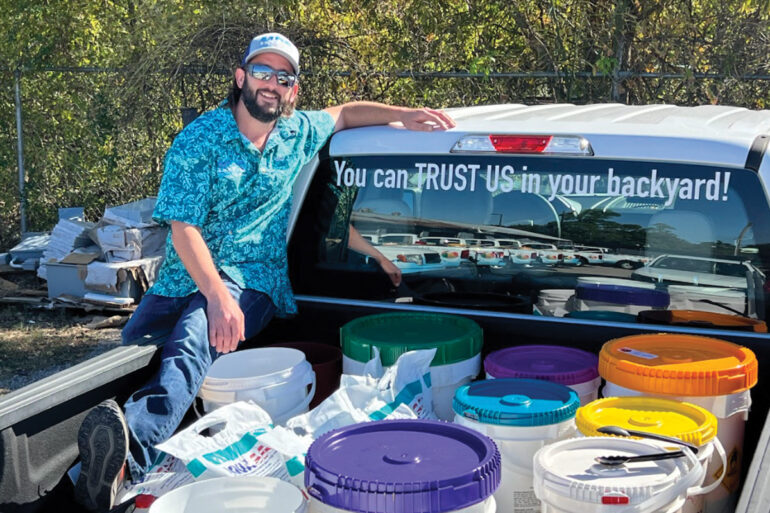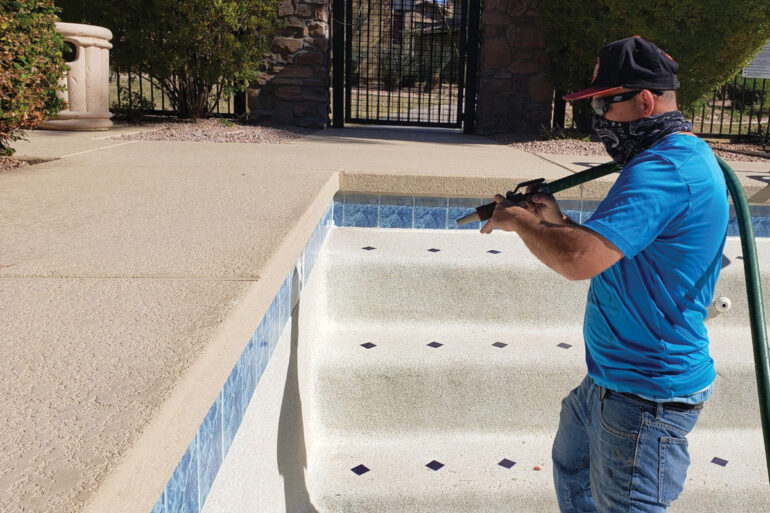The Clear Red Line

If a pool technician can’t persuade a reluctant customer to replace a feeble pump or a weathered liner, no big deal. Their pool, their choice — onto the next job.
But sometimes, a tech is obligated to not take “no” for an answer.
Pools that aren’t properly installed or maintained can be death traps, and techs have to know when to suggest a repair, when to insist on one and how to walk away if the customer refuses.
The Red Line: Electricity, Entrapment and Carbon Monoxide
Raymond Arouesty is the senior vice president of HUB International, the largest insurance brokerage in the United States. HUB owns Arrow Insurance Service, which has specialized in coverage for the pool and spa maintenance industry for nearly 40 years.
An attorney in California since 1990, Arouesty has handled more than 2,500 swimming pool–related claims. He worries techs don’t always make the distinction between elective pool repairs and those that could put the tech in legal jeopardy, risk lives or both.
“My rule is if it’s an issue that can result in death, serious injury or significant property damage, that’s the red line,” he says.
That red line almost always involves one of three issues. The first is electric shock.
“You’re dealing with a vessel that contains water and electricity,” Arouesty says, who knows service techs who have actually felt tingling in their hands when grabbing a pool railing.
“Just last summer, seven people received electric shocks in a residential swimming pool in Palm Springs, California,” he says. “The father of one of the girls who was in distress jumped in to save her. He was killed.”
This second issue is any defect that could cause entrapment, like hair or a hand becoming caught in a suction outlet.
“I had one claim many years ago where three firemen could not pull a 10-year-old child off a main drain that did not have a cover,” Arouesty says. “They couldn’t find the electrical cutoff switch and the child drowned.”
Finally, there’s odorless and deadly carbon monoxide, which can quickly bleed into a house when indoor pool heaters are not properly vented.
“I’ve got pictures of pools that are venting indoors without a vent going to the outside,” Arouesty says.
Knowing When to Walk Away
In egregious situations like these, Arouesty says most customers recognize the danger and agree to the repair. But in some cases, a nonchalant homeowner forces the tech’s hand.
“Recently a customer didn’t want to fix an electrical issue and told the service tech not to worry because they never turn on the light,” Arouesty says. “Others will say they don’t have children in the pool so a missing main drain isn’t a hazard.”
In these situations, the first and best remedy is to articulate and emphasize the risks as clearly as possible, “but if the homeowner refuses, you have no alternative but to drop that account,” Arouesty says.
Knowing How to Walk Away
If you’re in the unfortunate position of having to turn away business and end a customer relationship, your future and your company could depend on how you do it.
“The way in which an account gets dropped is very important,” Arouesty says.
He should know: Several years ago, one of his service techs dropped a customer because of a shock hazard. Six months later, a girl was killed in the pool and the tech was named in a lawsuit. The homeowner claimed not to understand the extent of the danger when the tech walked away, even though the tech insists he made it perfectly clear by providing a verbal warning. The lesson here is that pool techs should provide any safety warning in writing, Arouesty adds.
To protect yourself from legal action after you drop an account, document the incident in writing with a self-serving letter that:
Outlines the risk in detail.
Explains the remedy and gives a repair bid.
States that if the customer fails to accept the recommendations and repair the defect, you have no alternative but to terminate the account.
Includes a date certain for repairs to be made.
Is delivered by certified mail.
You keep in your records forever.
No, They Can’t Sign a Waiver
When the red line is crossed, some customers will offer to sign a waiver, which Arouesty says is never an acceptable solution.
First, waivers aren’t always enforceable and even when they are, the agreement only applies to the people who sign them.
“If there’s a party and the neighbor’s kids are swimming in the pool, the neighbors are not a party to the agreement,” Arouesty says. “They’re not bound by it, and they could certainly sue the technician.”
That rule even applies to trespassers in most cases, and even if the tech isn’t sued, he or she could be part of costly, time-consuming litigation.
Then, of course, there’s the moral issue of signing off on a dangerous pool through a waiver.
“What service tech would want to go to sleep every night knowing that he serviced a pool where people died because of words written on a piece of paper?” Arouesty says.
Although Arouesty operates in California, he stresses that, while not every state legally requires techs to insure the pools they maintain, pool techs have a duty in most states to make sure the pools they maintain are safe or provide warning if they aren’t. The customer is always right — until they cross the red line.






